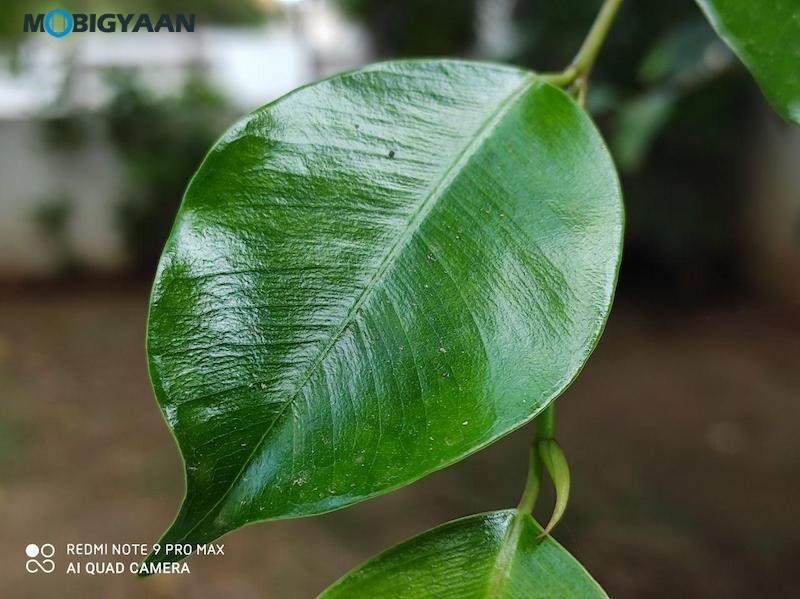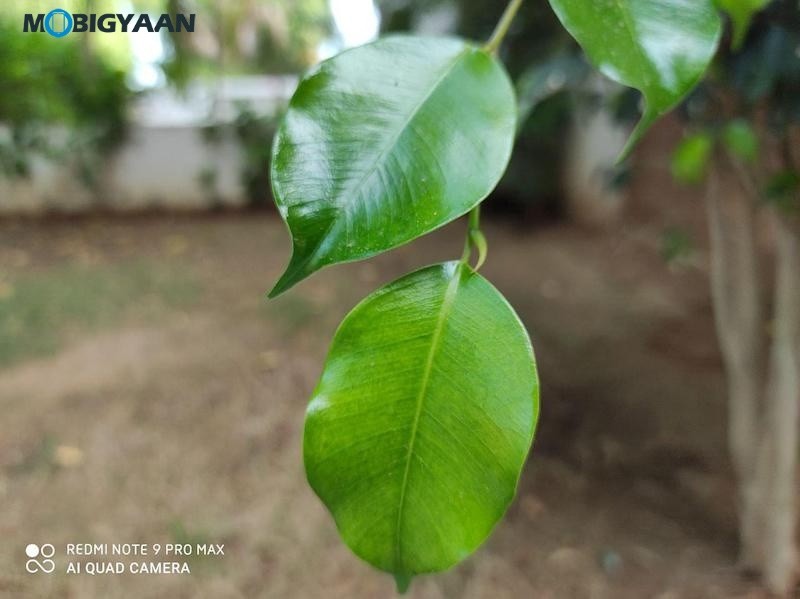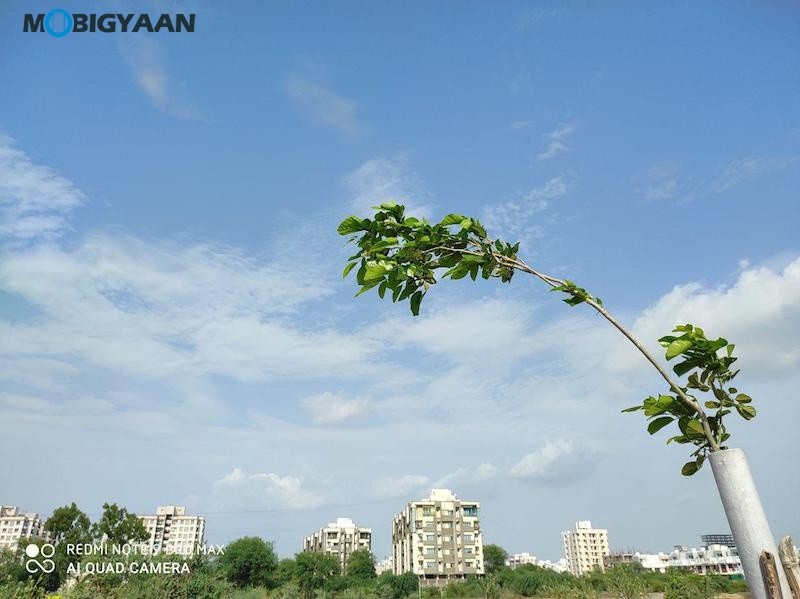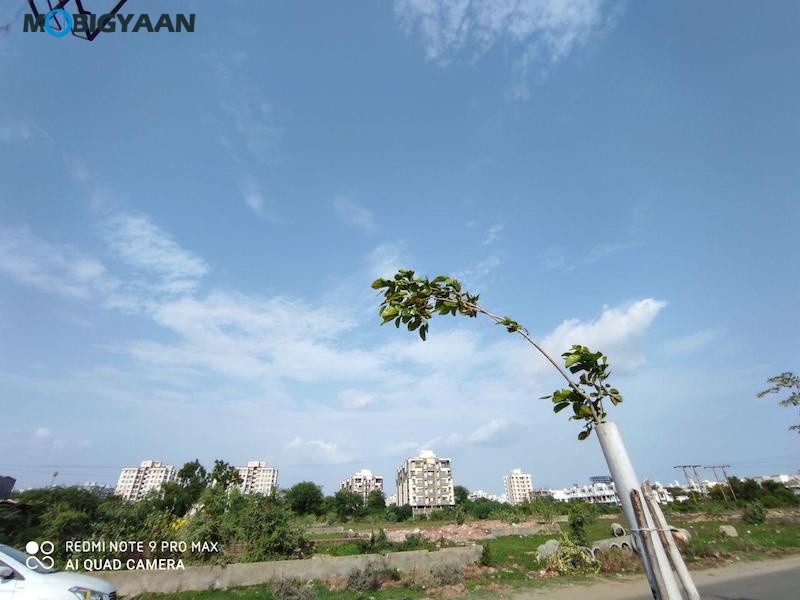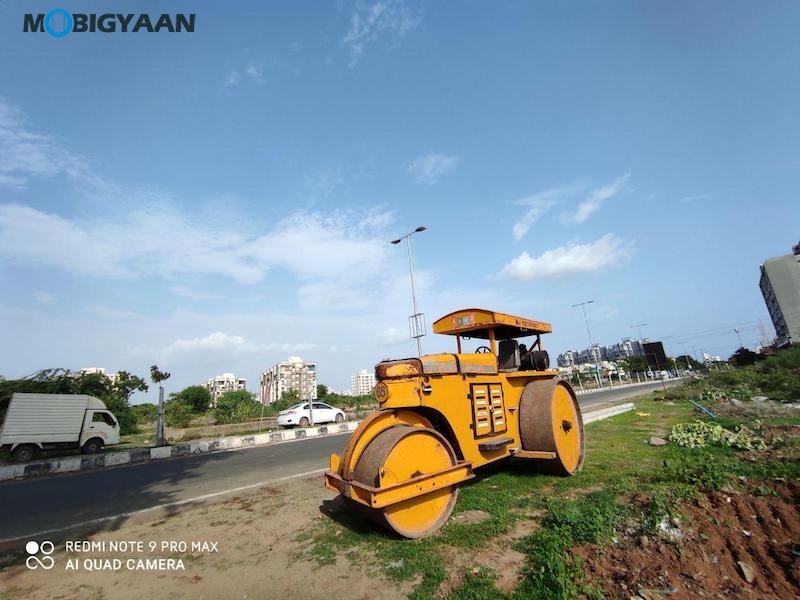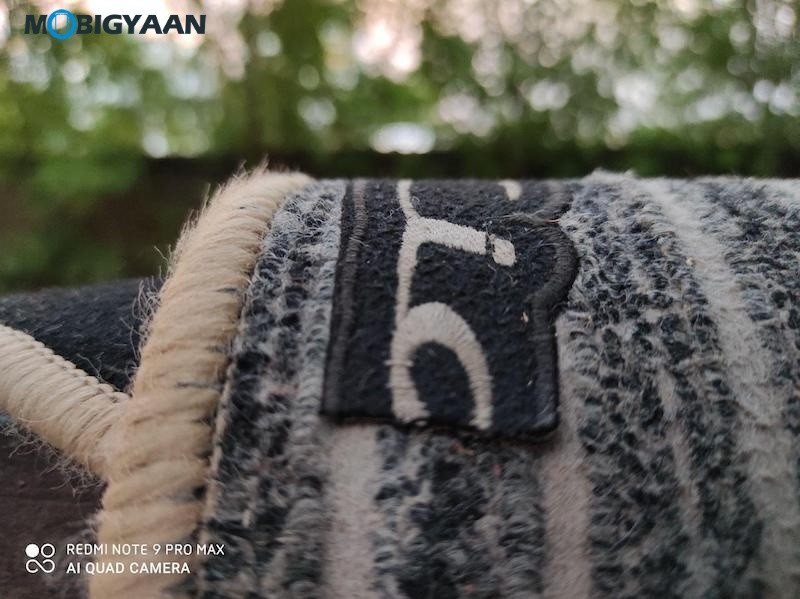Xiaomi latest midranger Redmi Note 9 Pro Max is now available in India. The Redmi Note 9 Pro Max is the upper variant of the Redmi Note 9 Pro with maximum features. It’s also the successor to the Redmi Note 8 Pro and now it’s even better than before.
The company launched the Remdi Note 9 series back in March and due to the coronavirus outbreak and the lockdown in India, the smartphones were unable to make it to the market. After the lockdown got a relief, the smartphones are available for purchase.
Speaking more about the series, it’s the ninth generation Redmi Note with the main highlights being a 32 MP punch-hole selfie camera, 64 MP quad cameras, and a big 5,020 mAh battery with 33W fast charging support. However, is it worth the price? Here’s all you need to know about the Redmi Note 9 Pro Max in our full review.
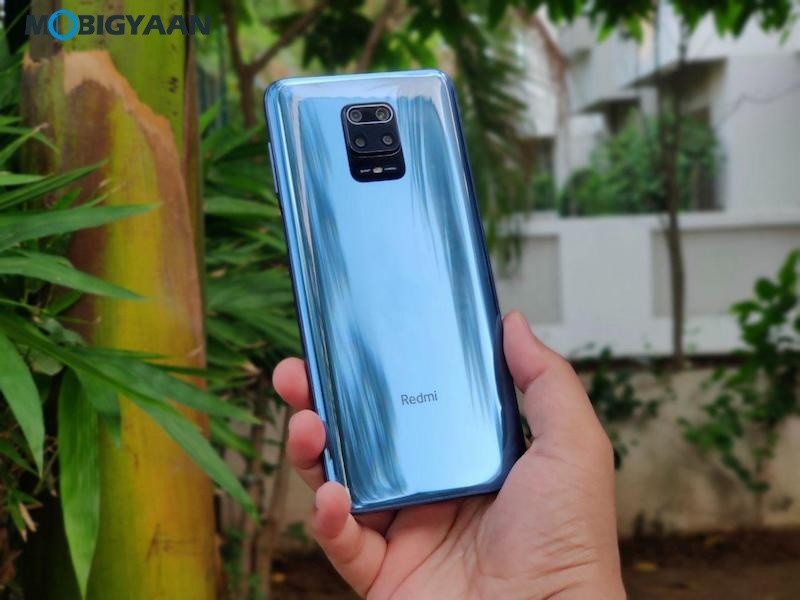
Xiaomi Redmi Note 9 Pro Max Specifications
- Display: 6.67-inch 20:9 Full HD+ LCD DotDisplay with Corning Gorilla Glass 5 protection
- Software: Android 10 with MIUI 11
- CPU: 8nm Qualcomm Snapdragon 720G SoC
- GPU: Adreno 618 GPU
- Memory: Up to 8 GB LPDDR4X
- Storage: Up to 128 GB UFS 2.1 internal storage; expandable up to 256 GB
- Main Camera: Quad Cameras, 64 MP Samsung GW1 sensor + 8 MP 120° ultra-wide angle lens + 5 MP 2cm macro lens + 2 MP depth sensor
- Selfie Camera: 32 MP
- Others: Side-mounted fingerprint sensor, Infrared sensor, Splash-proof (P2i coating)
- Connectivity Options: Dual 4G VoLTE, WiFi 802.11 ac (2.4GHz + 5GHz) 2 x 2 MIMO, VoWiFi, Bluetooth 5, GPS, NavIC, and USB Type-C port
- Battery: 5,020 mAh battery with 33W fast charging
- Colors: White, Aurora Blue, & Interstellar Black
- Price: ₹14,999 (6 GB + 64 GB), ₹16,999 (6 GB + 128 GB), ₹18,999 (8 GB + 128 GB)
- Availability: From 25th March
Design, Display, & Build
On the design front, the Redmi Note 9 Pro brings nothing new to the table, it follows the smartphone trend with its quad-camera setup and a punch-hole selfie camera design, although it’s the first Redmi Note series smartphone with a punch-hole camera. The back has a glass finish design covered with Gorilla Glass 5.
The phone surprisingly uses a physical fingerprint scanner side-mounted on the power button. Unlike the current smartphones that use the in-screen fingerprint scanner with the AMOLED displays, the Redmi Note 9 Pro Max with its IPS display, places its fingerprint scanner on the power button.
About the display, you get a 6.67-inch IPS DotDisplay with a Cinematic Screen aspect ratio of 20:9 and a resolution of Full HD+ (1080 x 2400 pixels). Both sides are protected by Corning Gorilla Glass 5. The Redmi Note 9 Pro Max comes in three color options – Aurora Blue, White, and Interstellar Black.
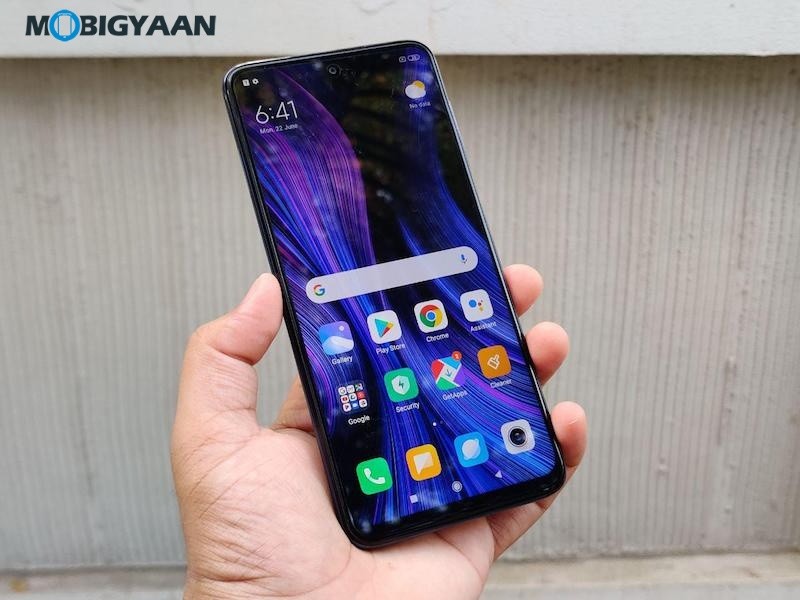
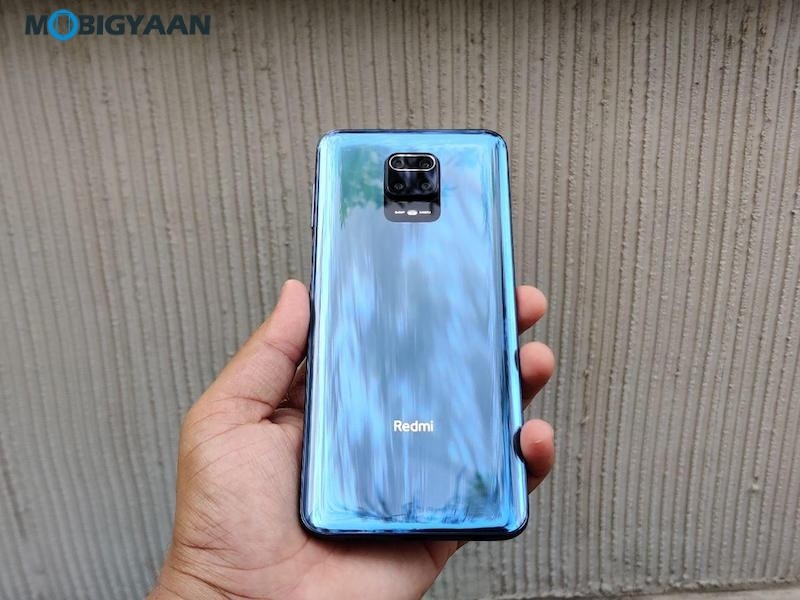
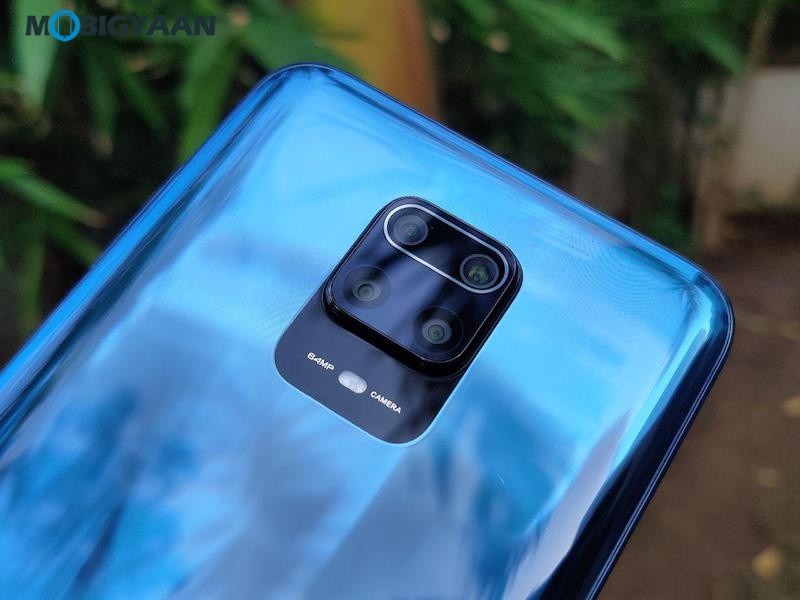
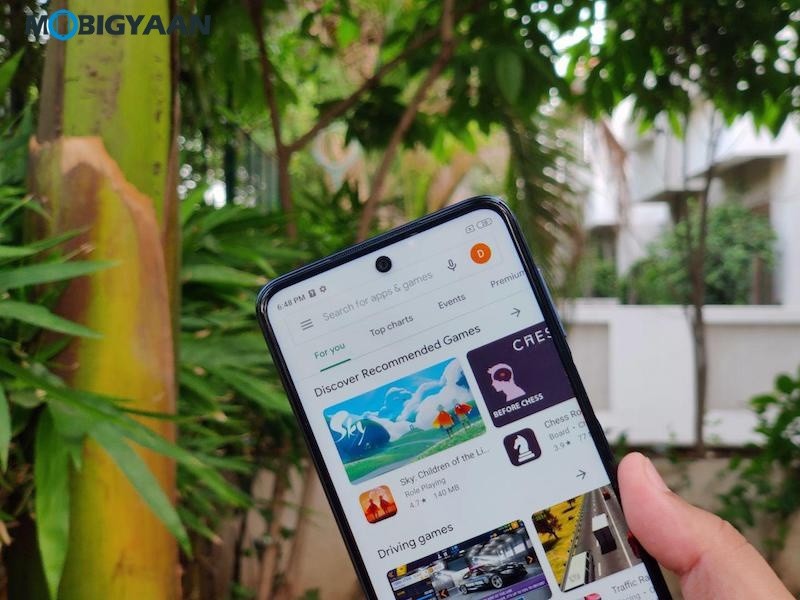
The retail box includes the phone, a protective case that’s flexible, a USB Type-C cable, a 33W fast charger, user manuals, and a SIM tray ejector pin. No earphones are bundled with it, you will need to buy them separately.
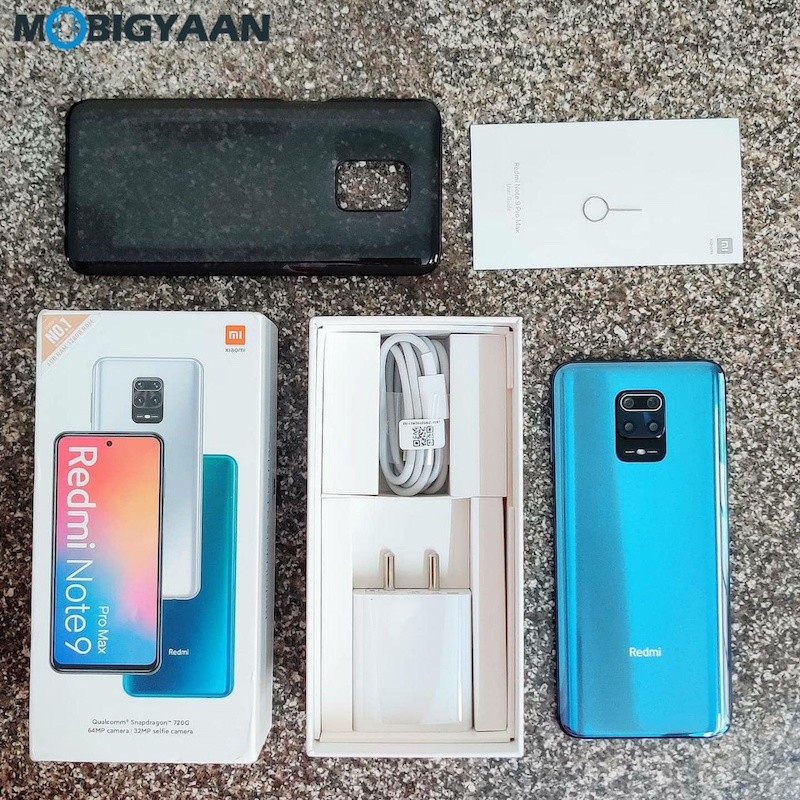
On the right side, you see a power button with a fingerprint scanner embedded on it and volume buttons. The left side has a triple-slot SIM tray, two 4G SIM slots, and one microSD card slot.
The bottom has a USB Type-C port, loudspeakers, 3.5 mm jack, and a microphone. The top side has an IR Blaster and another microphone for noise cancellation.
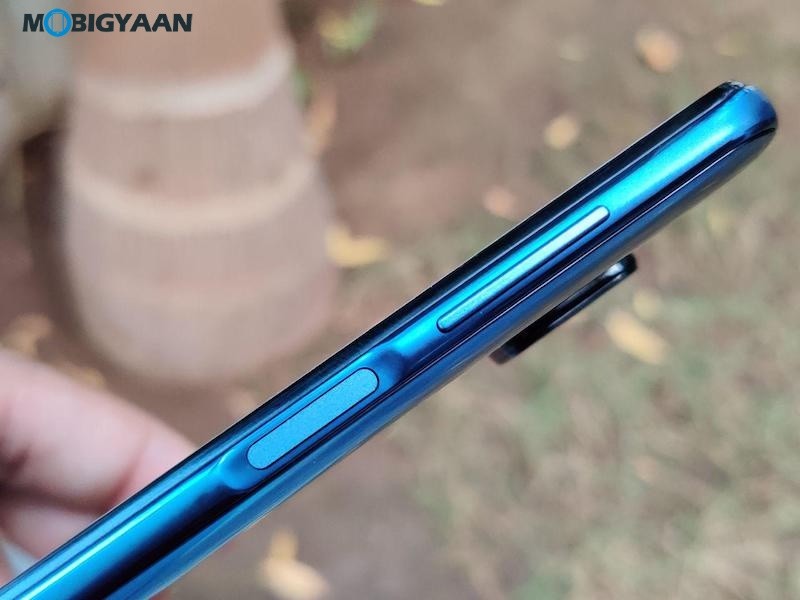
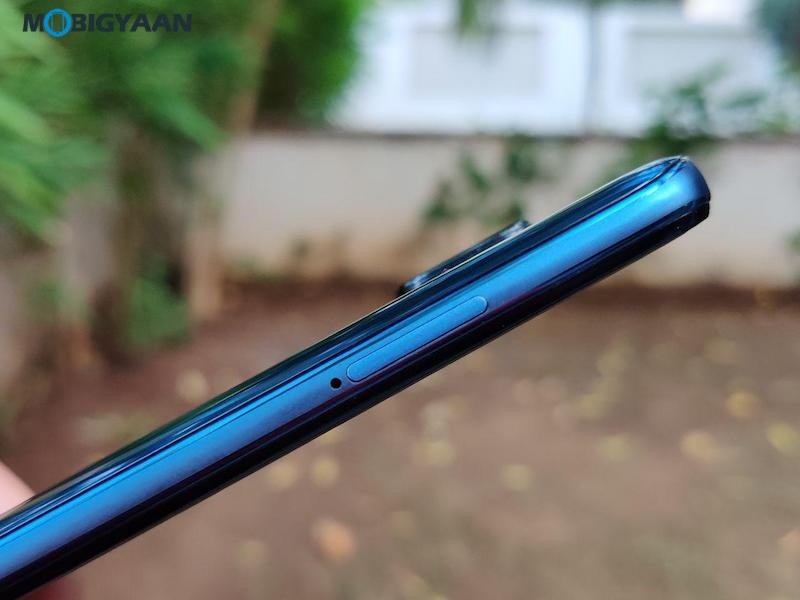
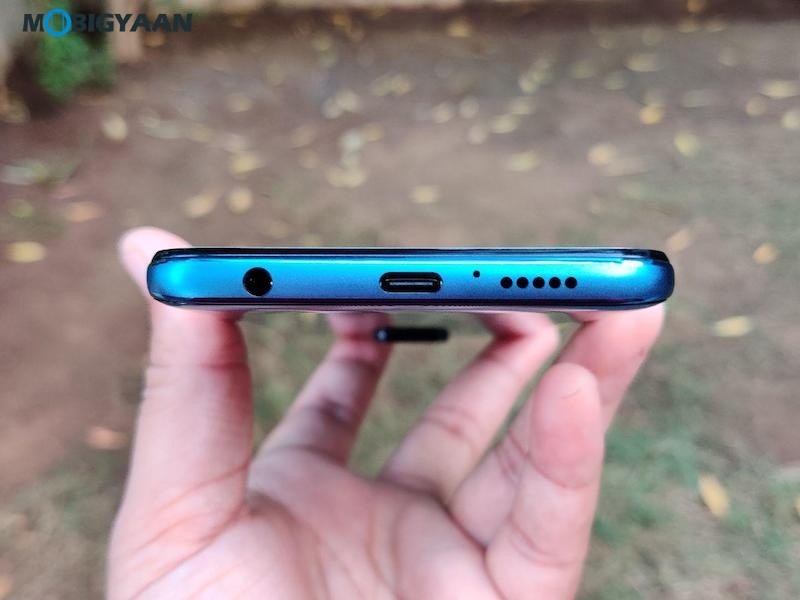
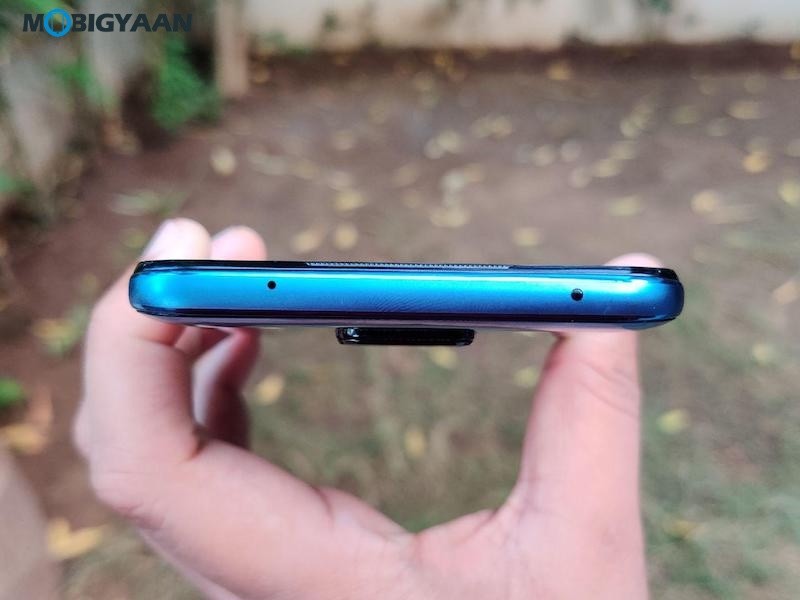
Software & User Interface
The Redmi Note 9 Pro Max runs on the latest MIUI 11 built over the Android 10. The MIUI 11 has plenty of features, from dark mode to UI customizations, icon packs, themes, new sounds, and the redesigned interface. Speaking of the performance of the UI, the interface runs smoothly as it’s light in weight.
The phone unlocks via the screen in a matter of seconds, it takes less than 0.5 seconds and sometimes a second to unlock, but you can rely on it as it’s a physical scanner. Although an on-screen fingerprint scanner would be better as far as the competition offers.
To know more about the MIUI 11, read out previous Redmi phone reviews running MIUI software.
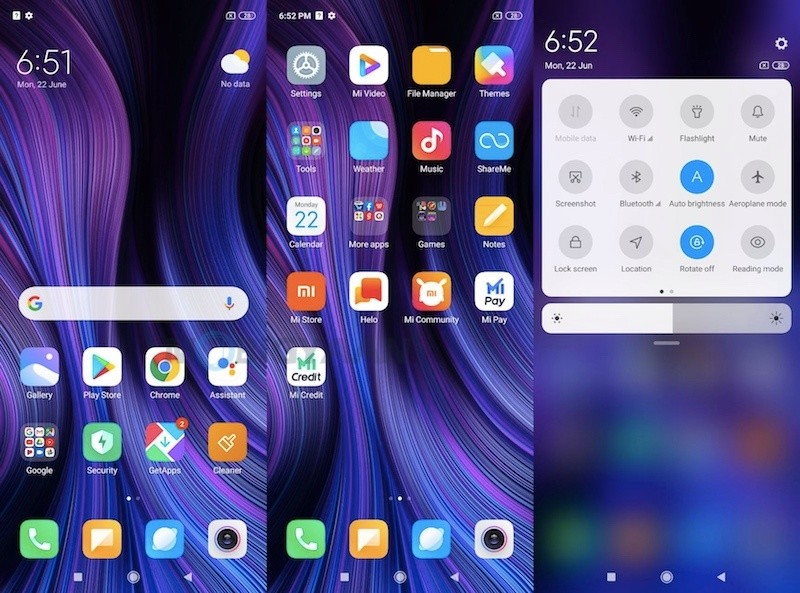
Hardware, Performance, & Gaming
Under the hood, the phone is powered by the Qualcomm Snapdragon 720G SoC which is a midrange CPU equivalent to the Snapdragon 730. The Snapdragon 730G is slightly ahead in terms of performance, however, the difference is insignificant.
Furthermore, the phone comes with up to 8 GB LPDDR4X RAM and 128 GB UFS 2.1 storage that expands via microSD card. The benchmarks may give you close or identical results. The Geekbench 5 benchmark results show that the score is pretty good given the price.
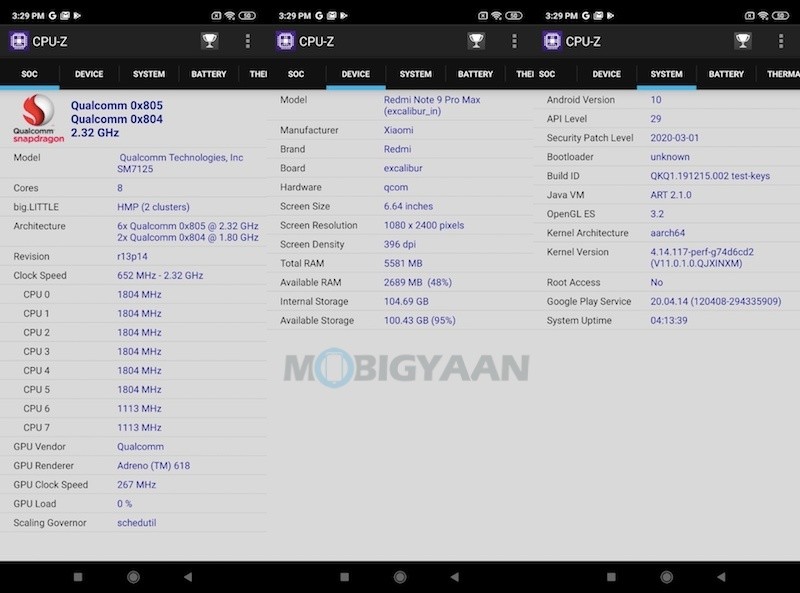
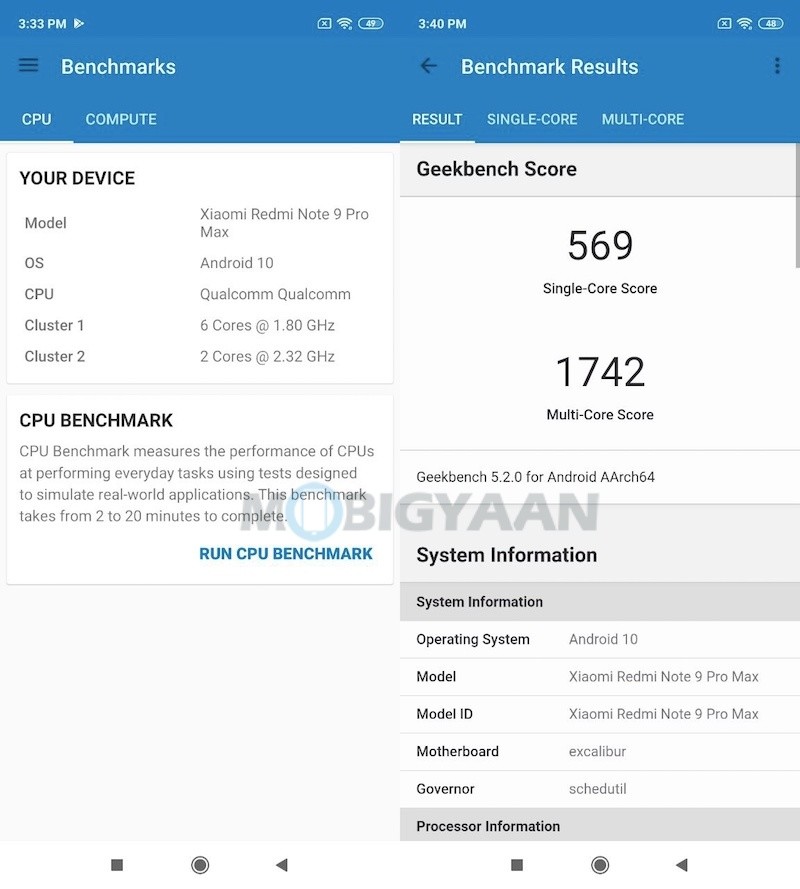
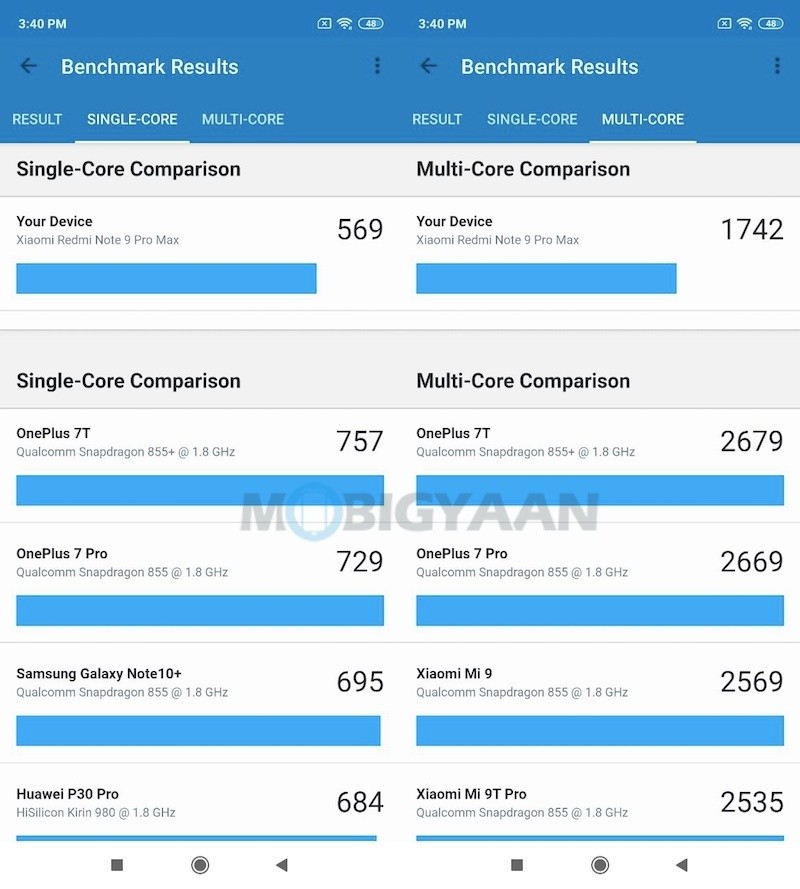
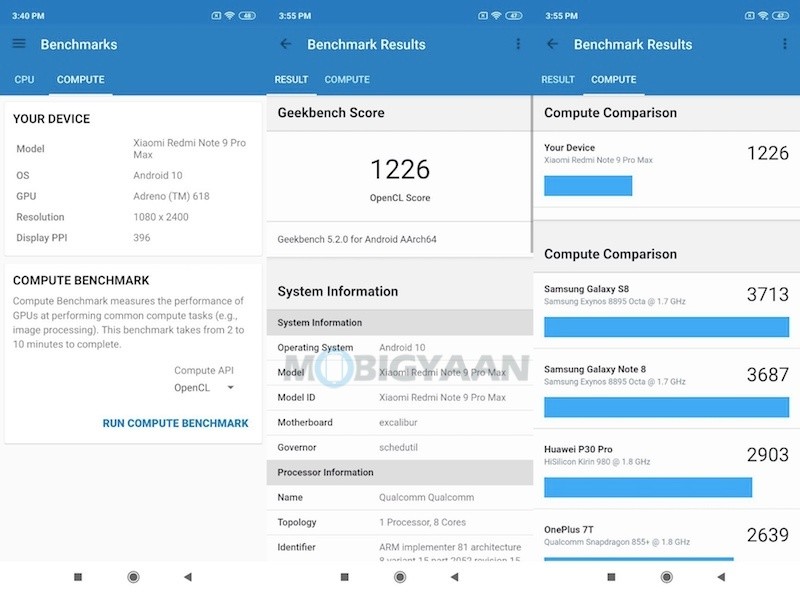
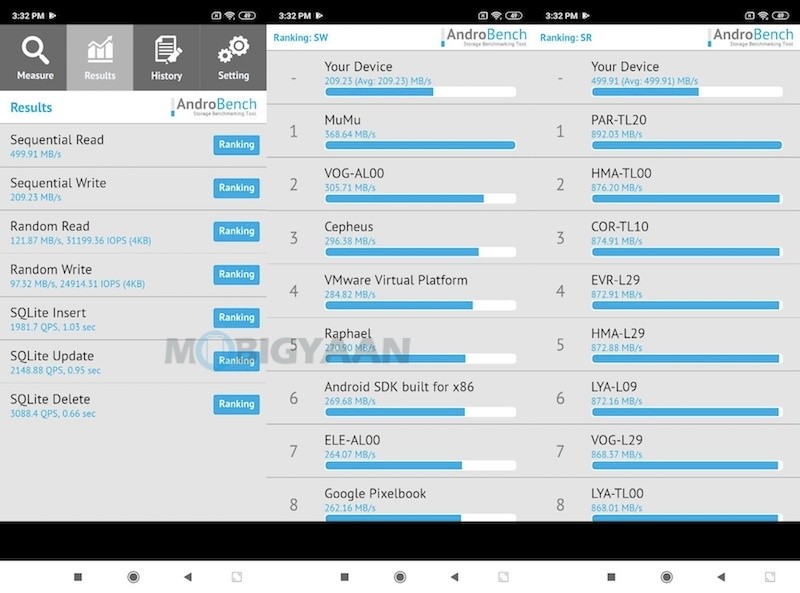
The Redmi Note 9 Pro Max comes in three variants, one with 6 GB RAM and 64 GB storage as the base variant, the second with 6 GB RAM and 128 GB storage, and the last being the top variant with 8 GB RAM and 128 GB storage. The pricing for the variants are ₹14,999 for 6 GB + 64 GB variant, ₹16,999 for 6 GB + 128 GB variant, and ₹18,999 for 8 GB + 128 GB variant.
For gaming, the phone packs an Adreno 618 GPU which is sufficient for running most games on medium to high graphics settings. In case you are a gamer and want a reliable GPU, it would be a wise option to choose either the Snapdragon 720G or Snapdragon 730G rather than the MediaTek Helio G90T although the difference of the gaming performance is negligible.
Cameras
As for the cameras, the Redmi Note 9 Pro Max equips a quad-camera setup on the back. The primary camera is a 64 MP, the secondary camera is an ultra-wide 8 MP, the third one is a macro camera using 5 MP sensor, and the last one 2 MP for depth measuring. The front side has a whopping 32 MP camera for taking selfies and video calling.
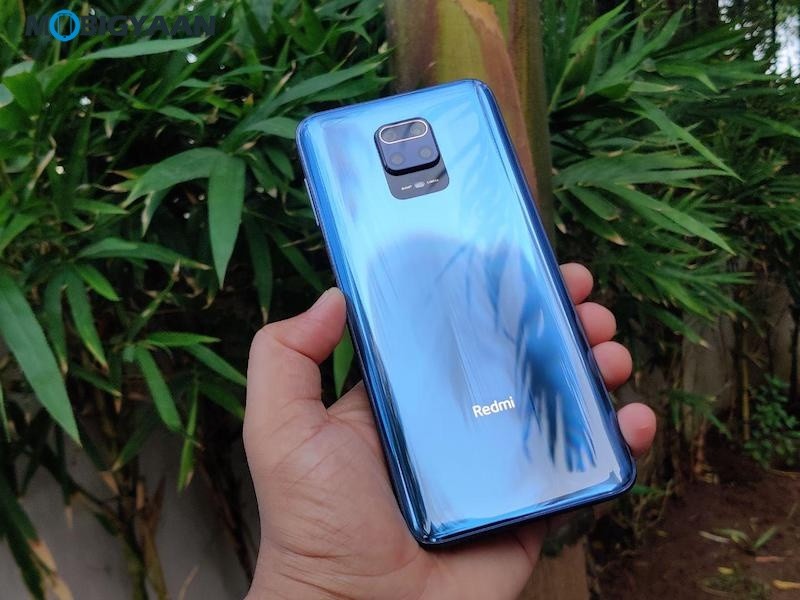

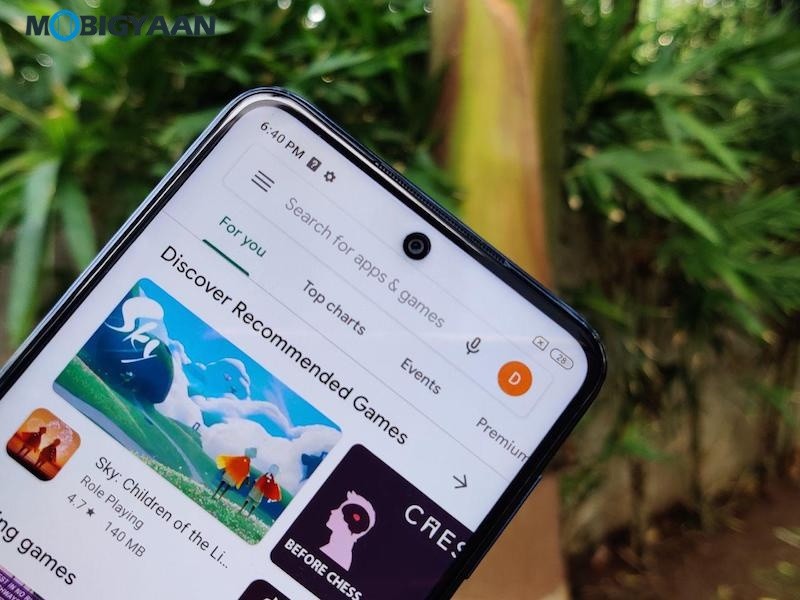
The camera specs look great and it competes with the smartphones in this price range. The main competitors are realme 6 Pro, Samsung Galaxy M31, and the realme X2. The 64 camera captures pretty good shots, the rest of the rear cameras are good, but not great.
The phone offers 4K video recording at 30fps and 1080p video at 60fps capabilities. You can also record slow-motion videos at 960 fps as well as at regular 240fps.
The interface comes with a 64 MP mode, Portrait mode, Movie mode (Cinema mode), Slow motion, Short video, Night, Panorama, and Pro mode. Other features include the Macro, Time Lapse, Google Lens, Docs, Tilt-Shift, Movie frame, and Macro video which seems a rare feature.
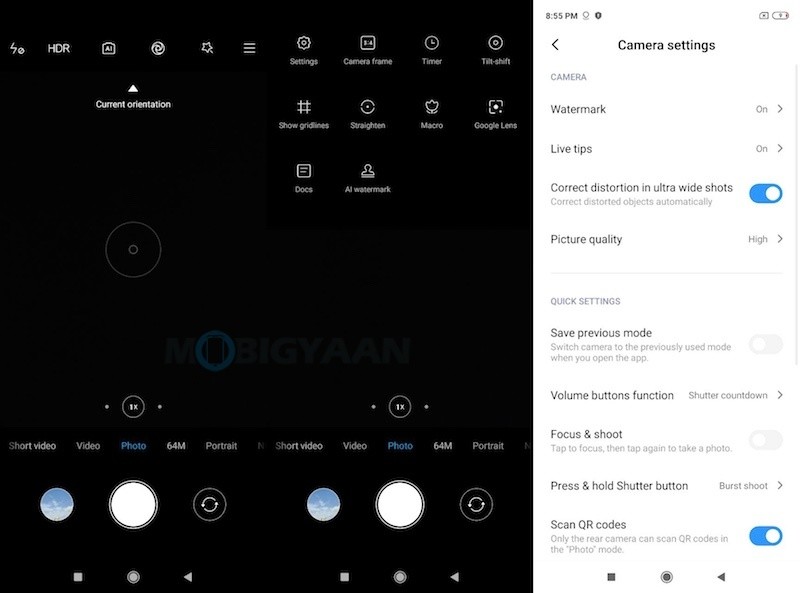
Here are some shots we took from the Redmi Note 9 Pro Max camera.
Xiaomi Redmi Note 9 Pro Max Camera Samples
Battery Life
Aside from all of these, the battery life is one of the most impressive features, the battery on the Redmi Note 9 Pro Max is 5,020 mAh, higher than the predecessor. This means it has better battery power than the Redmi Note 8 Pro and older Redmi Note series phones.
The Snapdragon 720G being an 8nm CPU can drastically make an impact in the battery life, the smaller the manufacturing process, the higher the chances of less power consumption. The Redmi Note 9 Pro Max is for those who want a reliable battery life.
Moving to the charging speed, this time the Xiaomi has put a super-fast 33W fast charger in the box and it might disrupt the competition as fast charging phones in this segment are quite a few. The realme X2 uses its VOOC charging technology and the Redmi Note 9 Pro is pretty close to it.
To see how fast the Redmi Note 9 Pro charges, you can put it in a charge for 30 minutes and the battery goes from 0% to 80% without a sweat. The Redmi Note 9 Pro battery performance is outstanding and it’s recommended for those who want a phone with reliable battery life.
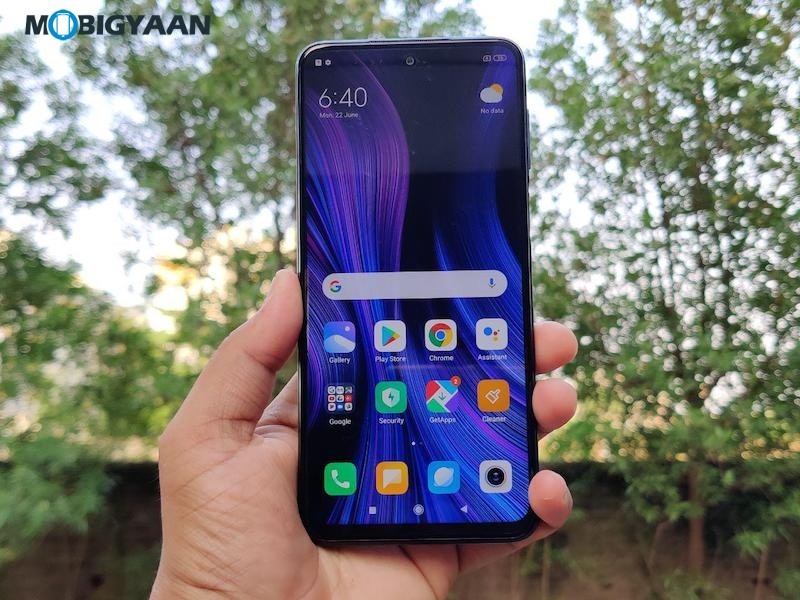
Verdict
Just like before, as many Redmi Note series smartphones primarily focus on the hardware, camera, and battery, this one too packs a punch. The Redmi Note 9 Pro Max has a 5,020 mAh battery with 33W fast charging support, a 64 MP quad-camera setup, Snapdragon 720G that’s powerful enough for mainstream gaming, and your daily tasks, and lastly a selfie camera of 32 MP for selfie needs.
All of these perks mark most checkboxes for a midranger, it’s certainly recommended for Redmi fans and for those who are looking for a phone with good cameras, outstanding battery life, and performance that you can rely on.
Nevertheless, the Redmi Note 9 Pro Max doesn’t use AMOLED display, for people who fancy AMOLED displays with an on-screen fingerprint scanner, you should check out the Samsung Galaxy M31 with a bigger battery (6,000 mAh) and realme X2 with slightly better specs (Snapdragon 730G).
Strength
- Splash Proof Glass Design
- Good CPU Performance
- Reliable Battery Life
- Camera Performs Well
- NFC Support
- microSD Card Support
Weakness
- Competitors offer 90Hz Screen & AMOLED Display


